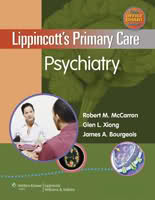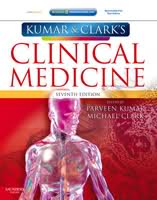A 14-year-old girl with skin rash, fever, muscle weakness and generalized myalgia
MedSource :: USMLE :: Self-Assessment
Page 1 of 1
 A 14-year-old girl with skin rash, fever, muscle weakness and generalized myalgia
A 14-year-old girl with skin rash, fever, muscle weakness and generalized myalgia
A 14-year-old girl with skin rash, fever, muscle weakness and generalized myalgia
A 14-year-old girl presented with a 2-month history of skin rash, fever, muscle weakness and generalized myalgia. Physical examination revealed a heliotropic rash (purple-pink in colour) over the eyelids and Gottron’s papules over the extensor surfaces of the wrist and over the dorsal interphalangeal and metacarpophalangeal joints (Fig. 1a). She also had severe weakness and tenderness of the muscles, including the bilateral deltoid muscles, femoral muscles and pelvic girdle

Her erythrocyte sedimentation rate (42 mm/h) and C-reactive protein level (8 mg/dl) were increased. Elevated levels of alanine aminotransferase (ALT), aspartate aminotransferase (AST), lactate dehydrogenase (LDH) and creatine phosphokinase (CPK) were found: 233 U/l (normal, <40 U/l), 317 U/l (normal, <40 U/l), 679 U/l (normal, 125–243 U/l) and 529 U/l (normal, 34–174 U/l), respectively. Serum urea, creatinine, albumin, anti-streptolysin O titre, complement levels (C3 and C4) and serum immunoglobulins (IgG, IgA, IgM and IgE) levels were within normal limits. Findings for auto-antibodies, including rheumatoid factor (RF), anti-nuclear antibody (ANA), anti-double-stranded (anti-ds) DNA, perinuclear anti-neutrophilic cytoplasmic antibody (p-ANCA), cytoplasmic anti-neutrophilic cytoplasmic antibody (c-ANCA) and anti-extractable nuclear antigen (anti-ENA) (anti-Ro, anti-La, anti-Sm, anti-RNP, anti-Scl-70 and anti-Jo-1) were all negative. Urinalysis revealed protein (3+) and blood (1+), and the sediment contained 25–30 red cells per high-power field. Urinary protein excretion was 743 mg/day (580 mg/m2 per day).
Electromyography (EMG) of bilateral deltoid, biceps femoris, iliopsoas and quadriceps muscles demonstrated polyphasic patterns with decreased amplitude and duration, indicating acquired myopathic inflammation. Magnetic resonance spectroscopy (MRS) of the thigh showed decreased creatine peak and elevated choline and myo-inositol peaks, reflecting muscle inflammation (Fig. 1b). Based on clinical findings and laboratory examinations, a diagnosis of juvenile dermatomyositis was made. Oral treatment with prednisolone (2 mg/kg per day) and methotrexate (15 mg/m2 per week) was started.
A percutaneous renal biopsy was performed on the 15th day of admission due to persistence of the proteinuria. Twenty-five glomeruli were obtained and showed proliferation of mesangial cells and an increased area of mesangial matrix (Fig. 1c). The glomerular capillary lumens were patent, with normal tubuli and arterioles. There was no cresent and/or fibrosis. Immunofluorescence microscopy revealed segmental deposits of IgA (3+) in the mesangium (Fig. 1d) and was negative for IgG, IgM, C3, C1q and fibrinogen. A diagnosis of IgA nephropathy was made, based on light- and immunofluorescence-microscopy. The existing therapy (prednisolone plus methotrexate) was continued, and additional drug was not given.
Her muscles enzyme (ALT, AST, CPK and LDH) levels gradually decreased, and her symptoms significantly improved during hospitalization. After she had undergone 6 weeks of therapy, the dose of steroid was tapered slowly and she was discharged. She was in good general condition. Her serum creatinine level was 0.6 mg/dl, and her proteinuria was 180 mg/m2 per day at her last outpatient follow up examination.
Our patient was diagnosed as having juvenile dermatomyositis according to the published criteria of inflammatory myopathies established by Bohan and Peter .
Renal involvement in patients with JDM is uncommon, and two main types of renal lesions have been described: acute tubular necrosis with renal failure and chronic glomerulonephritis . Review of the medical literature showed that there were only four cases reported with coexistent glomerulonephritis and dermatomyositis, and that the most common pattern was membranous glomerulonephritis .Only one adult who concurrently developed dermatomyositis with IgA nephropathy was reported by Yen et al.
The cause of JDM is unknown, and its pathogenesis is poorly understood. Both cell-mediated immunity to muscle antigens and immune-complex disease may participate in the pathogenesis .Also, the pathogenesis of IgA nephropathy remains uncertain; there is substantial evidence that it is an immune complex disease. Decrease of IgA specific suppressor T-cell activity and increase of IgA specific helper T-cell activity have been reported in patients with IgA nephropathy .
Consequently, several immune mechanisms play an important role in the pathogenesis of both JDM and IgA nephropathy. However, the relation between immunity abnormalities in both disorders is still unclear.
Rare associations of immunological disorders have recently been reported. These rare associations can contribute to the unravelling of the pathogenesis of glomerular diseases .
In conclusion, the coincidence of juvenile dermatomyositis and IgA nephropathy is not excluded, but, more likely, the existence of two immunological disorders in the same patient point to similar immunological pathogenetic mechanisms.
A 14-year-old girl presented with a 2-month history of skin rash, fever, muscle weakness and generalized myalgia. Physical examination revealed a heliotropic rash (purple-pink in colour) over the eyelids and Gottron’s papules over the extensor surfaces of the wrist and over the dorsal interphalangeal and metacarpophalangeal joints (Fig. 1a). She also had severe weakness and tenderness of the muscles, including the bilateral deltoid muscles, femoral muscles and pelvic girdle

Her erythrocyte sedimentation rate (42 mm/h) and C-reactive protein level (8 mg/dl) were increased. Elevated levels of alanine aminotransferase (ALT), aspartate aminotransferase (AST), lactate dehydrogenase (LDH) and creatine phosphokinase (CPK) were found: 233 U/l (normal, <40 U/l), 317 U/l (normal, <40 U/l), 679 U/l (normal, 125–243 U/l) and 529 U/l (normal, 34–174 U/l), respectively. Serum urea, creatinine, albumin, anti-streptolysin O titre, complement levels (C3 and C4) and serum immunoglobulins (IgG, IgA, IgM and IgE) levels were within normal limits. Findings for auto-antibodies, including rheumatoid factor (RF), anti-nuclear antibody (ANA), anti-double-stranded (anti-ds) DNA, perinuclear anti-neutrophilic cytoplasmic antibody (p-ANCA), cytoplasmic anti-neutrophilic cytoplasmic antibody (c-ANCA) and anti-extractable nuclear antigen (anti-ENA) (anti-Ro, anti-La, anti-Sm, anti-RNP, anti-Scl-70 and anti-Jo-1) were all negative. Urinalysis revealed protein (3+) and blood (1+), and the sediment contained 25–30 red cells per high-power field. Urinary protein excretion was 743 mg/day (580 mg/m2 per day).
Electromyography (EMG) of bilateral deltoid, biceps femoris, iliopsoas and quadriceps muscles demonstrated polyphasic patterns with decreased amplitude and duration, indicating acquired myopathic inflammation. Magnetic resonance spectroscopy (MRS) of the thigh showed decreased creatine peak and elevated choline and myo-inositol peaks, reflecting muscle inflammation (Fig. 1b). Based on clinical findings and laboratory examinations, a diagnosis of juvenile dermatomyositis was made. Oral treatment with prednisolone (2 mg/kg per day) and methotrexate (15 mg/m2 per week) was started.
A percutaneous renal biopsy was performed on the 15th day of admission due to persistence of the proteinuria. Twenty-five glomeruli were obtained and showed proliferation of mesangial cells and an increased area of mesangial matrix (Fig. 1c). The glomerular capillary lumens were patent, with normal tubuli and arterioles. There was no cresent and/or fibrosis. Immunofluorescence microscopy revealed segmental deposits of IgA (3+) in the mesangium (Fig. 1d) and was negative for IgG, IgM, C3, C1q and fibrinogen. A diagnosis of IgA nephropathy was made, based on light- and immunofluorescence-microscopy. The existing therapy (prednisolone plus methotrexate) was continued, and additional drug was not given.
Her muscles enzyme (ALT, AST, CPK and LDH) levels gradually decreased, and her symptoms significantly improved during hospitalization. After she had undergone 6 weeks of therapy, the dose of steroid was tapered slowly and she was discharged. She was in good general condition. Her serum creatinine level was 0.6 mg/dl, and her proteinuria was 180 mg/m2 per day at her last outpatient follow up examination.
Our patient was diagnosed as having juvenile dermatomyositis according to the published criteria of inflammatory myopathies established by Bohan and Peter .
Renal involvement in patients with JDM is uncommon, and two main types of renal lesions have been described: acute tubular necrosis with renal failure and chronic glomerulonephritis . Review of the medical literature showed that there were only four cases reported with coexistent glomerulonephritis and dermatomyositis, and that the most common pattern was membranous glomerulonephritis .Only one adult who concurrently developed dermatomyositis with IgA nephropathy was reported by Yen et al.
The cause of JDM is unknown, and its pathogenesis is poorly understood. Both cell-mediated immunity to muscle antigens and immune-complex disease may participate in the pathogenesis .Also, the pathogenesis of IgA nephropathy remains uncertain; there is substantial evidence that it is an immune complex disease. Decrease of IgA specific suppressor T-cell activity and increase of IgA specific helper T-cell activity have been reported in patients with IgA nephropathy .
Consequently, several immune mechanisms play an important role in the pathogenesis of both JDM and IgA nephropathy. However, the relation between immunity abnormalities in both disorders is still unclear.
Rare associations of immunological disorders have recently been reported. These rare associations can contribute to the unravelling of the pathogenesis of glomerular diseases .
In conclusion, the coincidence of juvenile dermatomyositis and IgA nephropathy is not excluded, but, more likely, the existence of two immunological disorders in the same patient point to similar immunological pathogenetic mechanisms.

salahoudin- VIP

-


Number of posts : 145
Age : 38
Nerden : ALGERIA
İş/Hobiler : Doctor
Reputation : -1
Points : 5650
Registration date : 2009-02-22
 Similar topics
Similar topics» Case 1: A 3-year-old boy presents to A&E with fever of 39°C... ?
» Daniels and Worthingham's Muscle Testing: Techniques of Manual Examination (BOOK + DVD)
» Clinical Manual of Fever in Children, 1st Edition
» Yearbook of Intensive Care and Emergency Medicine: 2009, 1st Edition
» Schwartz's Principles of Surgery, 9 Ed - 2010
» Daniels and Worthingham's Muscle Testing: Techniques of Manual Examination (BOOK + DVD)
» Clinical Manual of Fever in Children, 1st Edition
» Yearbook of Intensive Care and Emergency Medicine: 2009, 1st Edition
» Schwartz's Principles of Surgery, 9 Ed - 2010
MedSource :: USMLE :: Self-Assessment
Page 1 of 1
Permissions in this forum:
You cannot reply to topics in this forum|
|
|















